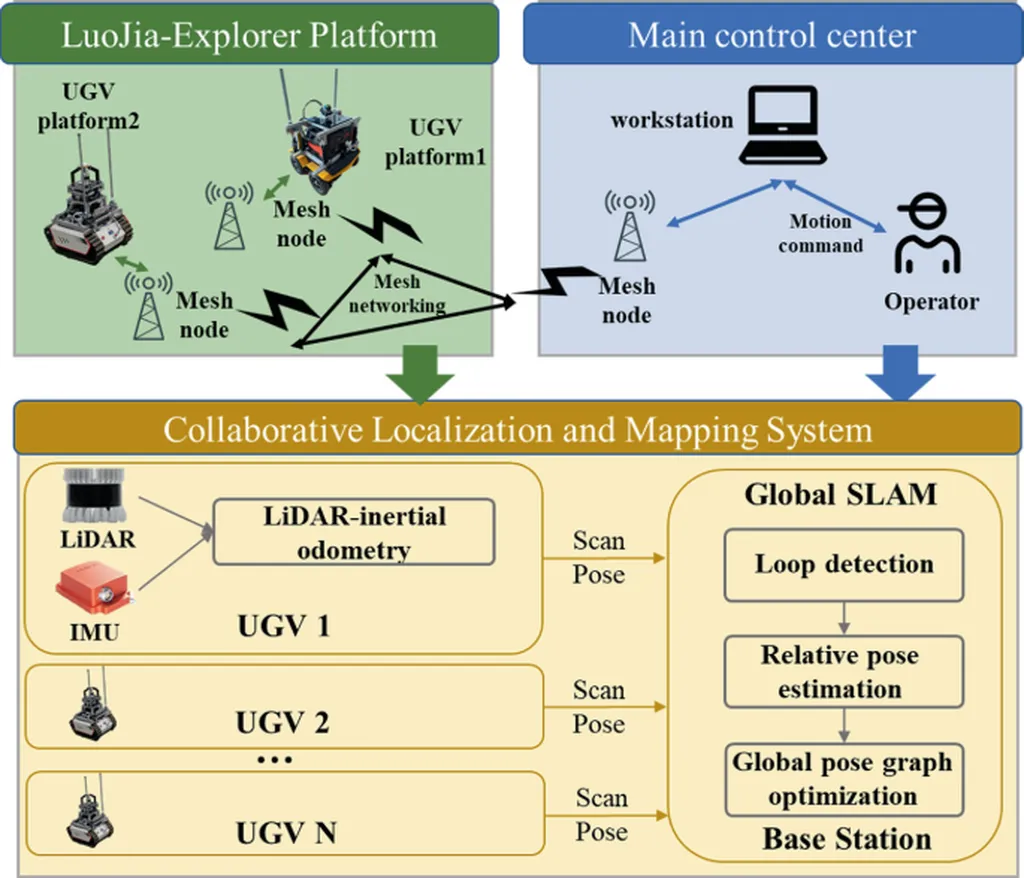In the realm of unmanned systems and autonomous exploration, a groundbreaking development has emerged from the State Key Laboratory of Information Engineering in Surveying, Mapping and Remote Sensing at Wuhan University. Lead author Chen and their team have introduced the Luojia Explorer, a multi-robot autonomous exploration and mapping system designed to tackle the challenges of unknown spaces. This innovation is poised to revolutionize industries, particularly the energy sector, where efficient and accurate mapping of complex environments is crucial.
The Luojia Explorer system addresses a significant gap in current technology. Traditional single-robot exploration methods often fall short in large-scale scenarios or time-sensitive tasks. Multi-robot collaboration, while promising, has faced hurdles in achieving fully autonomous exploration and mapping. Chen’s system integrates multi-robot collaborative simultaneous localization and mapping (C-SLAM) with collaborative exploration and planning, enabling efficient and autonomous exploration of unknown spaces.
“Our system represents a significant leap forward in autonomous exploration technology,” said Chen. “By leveraging multi-robot collaboration, we can achieve exploration efficiencies that were previously unattainable.”
The implications for the energy sector are profound. In industries such as oil and gas, where exploration and mapping of complex environments are critical, the Luojia Explorer could enhance safety, reduce costs, and improve operational efficiency. For instance, in offshore drilling or underground mining, autonomous robots equipped with the Luojia Explorer system could navigate and map hazardous or inaccessible areas, providing valuable data for decision-making.
The system’s effectiveness has been validated in campus scenarios, achieving an impressive exploration efficiency of 38.15 cubic meters per second. This success underscores the potential of the Luojia Explorer to be applied in various real-world settings, from urban search and rescue to infrastructure inspection.
As the world continues to push the boundaries of autonomous technology, the Luojia Explorer stands out as a beacon of innovation. Its ability to seamlessly integrate multi-robot collaboration and advanced mapping techniques opens new avenues for exploration and data collection.
Published in ‘The International Archives of the Photogrammetry, Remote Sensing and Spatial Information Sciences’—known in English as the International Archives of Photogrammetry, Remote Sensing and Spatial Information Sciences—the research highlights the growing importance of multi-robot systems in autonomous exploration. As Chen and their team continue to refine and expand the capabilities of the Luojia Explorer, the future of autonomous exploration looks brighter than ever.
The Luojia Explorer is not just a technological advancement; it’s a testament to human ingenuity and our relentless pursuit of knowledge. As we stand on the brink of a new era in autonomous exploration, the possibilities are limitless, and the potential impact on industries like energy is immense.

